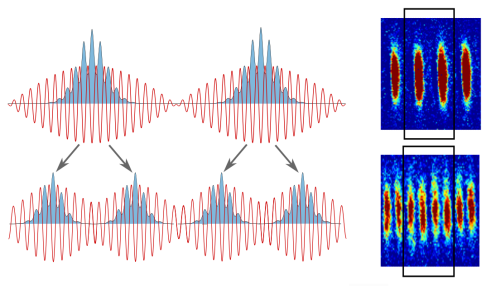 |
We report the realization of two Mach–Zehnder interferometers operating in parallel with Bose–Einstein condensates trapped in two neighboring double-well potentials, implemented using Beat-Note Superlattices with large spatial periodicities. Both the splitting and recombination operations between the two interferometer modes are performed with the atoms fully trapped, exploiting tunneling through the central barrier. This is made possible by tuning the scattering length of potassium atoms to zero via a broad Feshbach resonance. Our system constitutes the first experimentally realized trapped-atom gradiometer and represents a promising platform for fundamental physics tests and high–spatial–resolution force measurements. T. Petrucciani et al. |


Pushing the limits of atom interferometry...The system we want to realize is a Mach-Zender spatial interferometer operating with trapped Bose-Einstein condensates (BECs). Phase diffusion caused by interatomic collisions are suppressed implementing BECs with tunable interactions in ultra-stable optical potentials. Entangled states can be used to improve the sensitivity of the sensor beyond the standard quantum limit to ideally reach the ultimate, Heisenberg, limit set by quantum mechanics. Our project aims at developing a sensor with unprecedented spatial resolution able to compete with, and eventually overcome, state-of-the-art interferometers with cold (non condensed) atomic waves.
